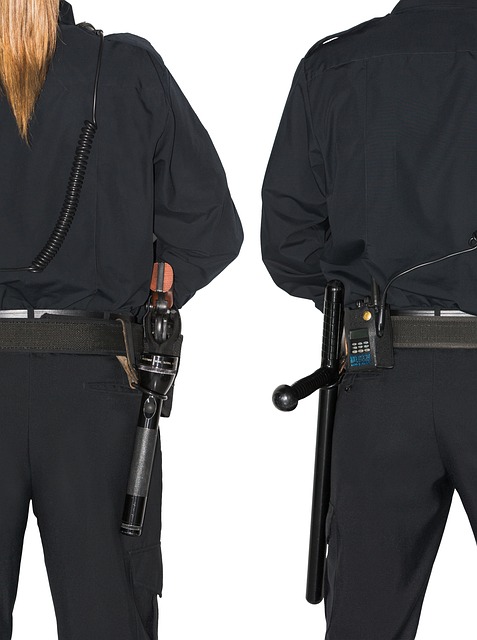RF Regulatory Agency investigations require meticulous navigation through appeals and post-conviction relief processes for manufacturers facing charges. While appeals focus on reviewing factual findings and regulatory applications, post-conviction relief addresses legal errors during investigation, prosecution, or sentencing. Understanding these differences is crucial for white-collar defense, ensuring fairness and exploring all options to achieve favorable outcomes in complex RF cases.
“Unraveling the intricacies of RF Regulatory Agency Investigations, this comprehensive guide offers a detailed look at understanding, appealing, and navigating post-conviction relief for RF device manufacturers. Learn about the rights and procedures involved in the appeal process, as well as exploring key differences between appeals and post-conviction relief. With regulatory actions impacting businesses, knowing these distinctions is vital for strategic decision-making and ensuring legal compliance.”
- Understanding RF Regulatory Agency Investigations: A Comprehensive Overview
- The Appeal Process: Rights and Procedures for RF Device Manufacturers
- Post-Conviction Relief: Exploring Options for Legal Redemption
- Key Differences: Navigating Appeals vs. Post-Conviction Relief in RF Regulatory Cases
Understanding RF Regulatory Agency Investigations: A Comprehensive Overview
RF Regulatory Agency Investigations play a critical role in ensuring compliance with radio frequency (RF) standards and regulations. These investigations are initiated when there’s a suspected violation, ranging from unauthorized RF emissions to safety hazards. The process involves thorough examination of equipment, operations, and documentation. Key distinctions from general criminal defense lie in scope and focus: while criminal cases target punishable offenses, RF investigations concentrate on regulatory adherence.
Unprecedented track records of successful outcomes are often attributed to the meticulousness and specialized knowledge employed by these agencies. For his clients facing RF-related charges, engaging legal counsel with a deep understanding of these investigations is pivotal. Understanding the nuances between appeals and post-conviction relief is essential in navigating potential legal remedies, ensuring fair outcomes in these complex proceedings.
The Appeal Process: Rights and Procedures for RF Device Manufacturers
When facing an investigation by an RF Regulatory Agency, manufacturers of radio frequency (RF) devices have specific rights and procedures available to them during the appeal process. Understanding the difference between appeal and post-conviction relief is crucial for navigating this phase effectively. While post-conviction relief focuses on correcting legal errors that occurred in prior stages of the investigative and enforcement process, an appeal centers on reviewing the factual findings and application of laws or regulations specific to the case.
For corporate and individual clients alike, across the country, the appeal process offers a chance to present new evidence, challenge the validity of evidence used against them, and argue for a different interpretation of the facts. This procedure is designed to ensure fairness and balance during all stages of the investigative and enforcement process, ultimately aiming to uphold the rights of RF device manufacturers while maintaining the integrity of regulatory standards across the country.
Post-Conviction Relief: Exploring Options for Legal Redemption
Post-conviction relief offers a pathway to legal redemption for individuals convicted of crimes, including high-stakes cases involving white-collar and economic offenses. Unlike an appeal, which focuses on correcting procedural errors or reevaluating guilt, post-conviction relief is a broader mechanism designed to address issues that arose during the investigation, prosecution, or sentencing phase. This process allows defendants to bring forth new evidence, challenge their convictions based on ineffective assistance of counsel, or argue that their rights were violated at any stage of the investigative and enforcement process.
Understanding the nuances between appeal and post-conviction relief is crucial for those navigating legal consequences stemming from complex financial crimes. As high-stakes cases often involve intricate factual scenarios and significant penalties, exploring all available options becomes essential to achieving a favorable outcome.
Key Differences: Navigating Appeals vs. Post-Conviction Relief in RF Regulatory Cases
In RF Regulatory Agency investigations, understanding the key differences between navigating appeals and post-conviction relief is crucial for achieving favorable outcomes in white collar defense cases. While both involve legal challenges to regulatory decisions, they occur at distinct stages of the investigative and enforcement process. Appeals typically follow an initial decision or ruling by the agency, offering a chance to review and potentially reverse or modify that decision within the existing legal framework. This process focuses on ensuring procedural correctness and interpreting applicable laws.
Post-conviction relief, in contrast, comes into play after a conviction has been secured. It provides an opportunity to challenge the validity of the conviction based on newly discovered evidence, errors in trial proceedings, or changes in the law that could lead to winning challenging defense verdicts. This avenue is more complex and requires demonstrating circumstances that did not exist at the time of the original trial, making it a powerful tool for achieving justice even after a judgment has been rendered.
RF Regulatory Agency investigations can significantly impact radio frequency device manufacturers, whether through appeals or post-conviction relief. Understanding the nuances between these two processes is crucial for navigating potential legal challenges. While appeals focus on correcting procedural errors and reinterpreting regulations, post-conviction relief provides a chance to examine new evidence and reconsider convictions. By grasping these key differences, manufacturers can strategically advocate for their rights, ensuring fairness and legal redemption in RF regulatory cases.






